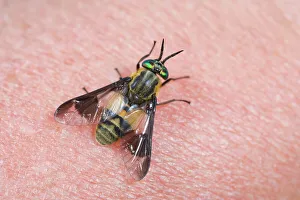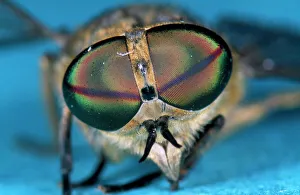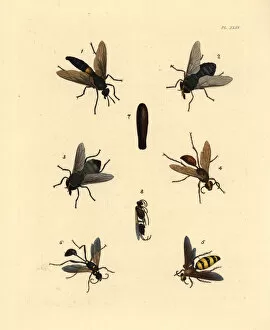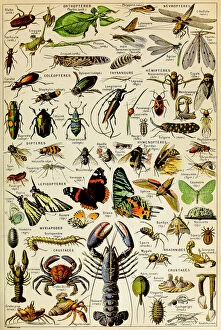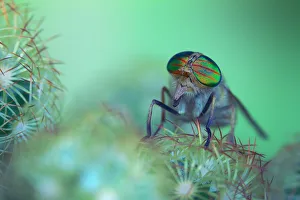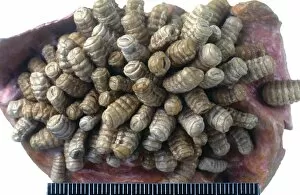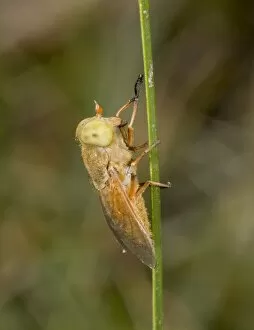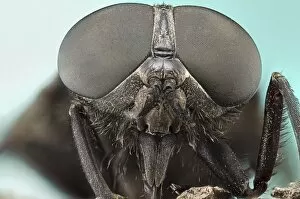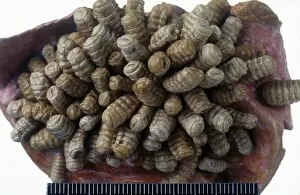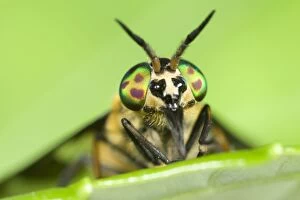Horsefly Collection
The horsefly, scientifically known as Horse Fly JC 222 Diptera: Tabanus bromius
All Professionally Made to Order for Quick Shipping
The horsefly, scientifically known as Horse Fly JC 222 Diptera: Tabanus bromius, is a fascinating insect that captivates the attention of entomologists and nature enthusiasts alike. In this captivating photograph captured by John Clegg/ARDEA LONDON, we witness the intricate details of this remarkable creature. In one image, we observe a horse (deer) fly perched on human skin in Norfolk UK. Its presence reminds us of the close interactions between insects and humans in our natural environment. The detailed study of its eyes reveals an astonishing pattern - banded eyes that add to its unique allure. Another snapshot showcases two horse flies sitting gracefully on a leaf in Norfolk UK. Their delicate wings glisten under the sunlight, showcasing their ethereal beauty amidst nature's tapestry. These flies are not mere pests; they are essential components of our ecosystem. As we delve deeper into their world, we discover that these strange two-winged insects play vital roles alongside other creatures like wasps and daubers. They contribute to pollination and serve as food sources for various organisms within their appropriate environment. An intriguing coloured engraving from times past depicts these horseflies alongside other invertebrates from c. 1923 – reminding us of how long they have coexisted with humanity throughout history. This illustration serves as a testament to their enduring presence on Earth. Lastly, a stunning portrait captures the essence of this magnificent species - Tabanus aeneus Surcouf - commonly referred to as the horse fly. With its piercing mouthparts designed for sucking blood, it evokes both awe and caution among those who encounter it. The world of horseflies is vast and diverse; each species possesses unique characteristics that make them truly remarkable creatures worth studying and appreciating.


